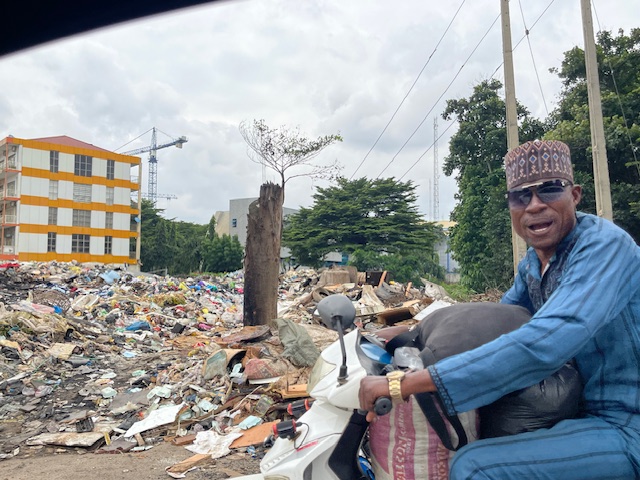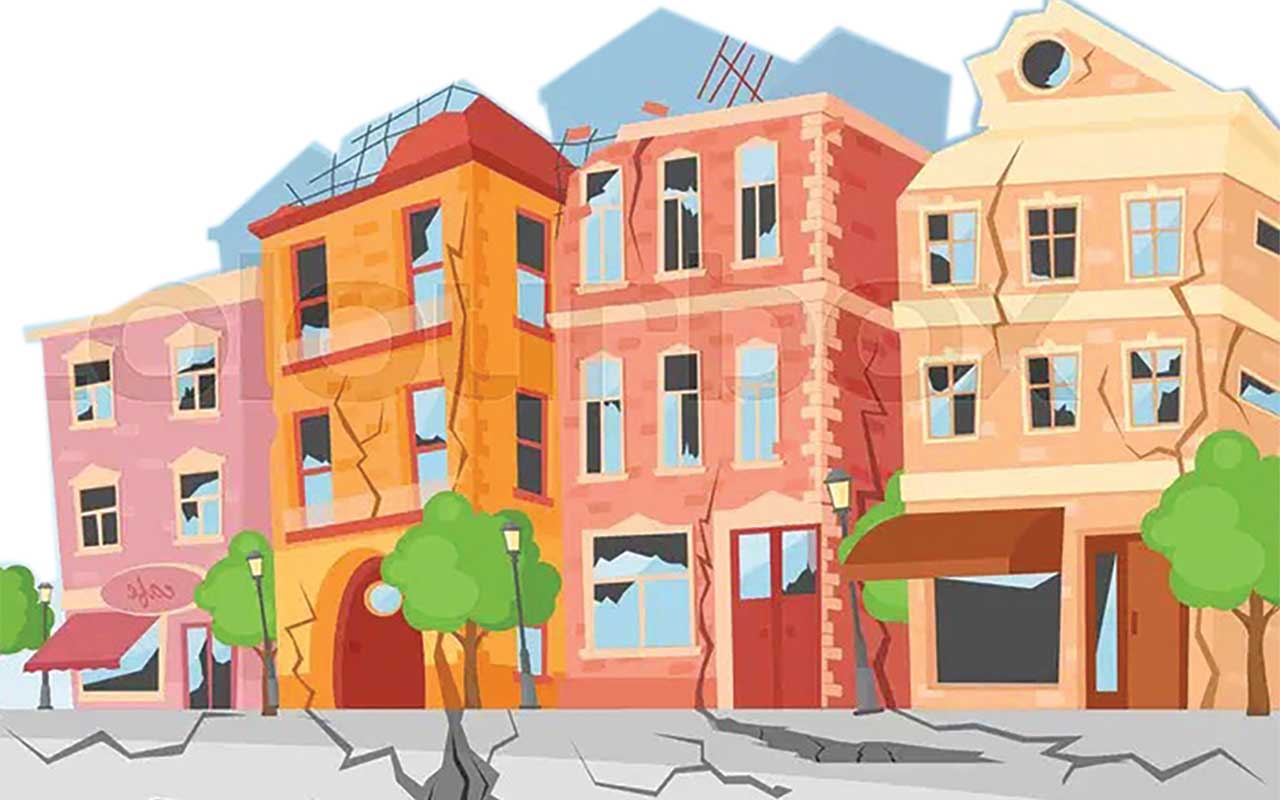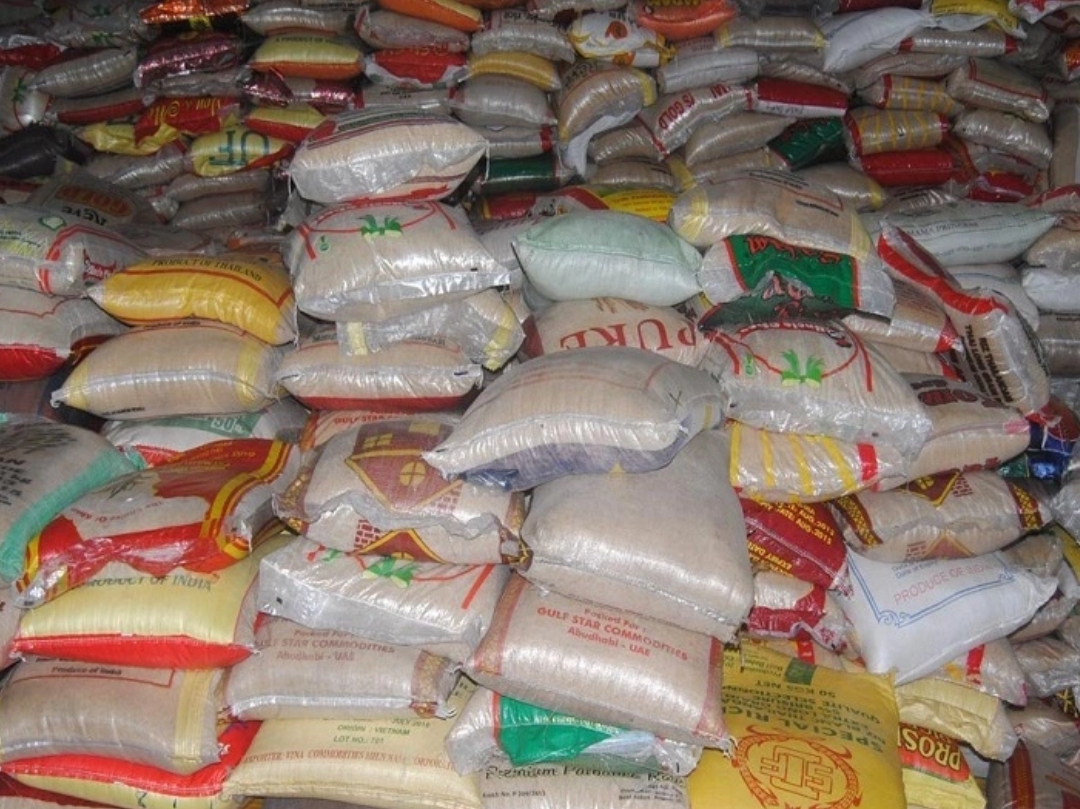While the Federal Capital Territory (FCT) under Minister Nyesom Wike has made progress in construction of new bridges and expanding road infrastructure, the growing waste from informal settlements remains a blight on the city’s image, JENNIFER DANIEL writes.
In Abuja, waste piles are fast becoming an all-too-familiar sight, an eyesore and a public health hazard. This is primarily fuelled by the informal settlement scattered across the main city and its satellite towns.
The city is struggling to manage waste, particularly, in informal settlements scattered across its upscale districts such as Garki, Jabi, Mabushi and Gwarinpa. The situation, which raises serious public health concerns, has also become a persistent worry for business owners operating in these areas.
For instance, if you pick up a cup of ice cream or a slice of pizza on Third Avenue in Gwarinpa, the city’s largest estate, you won’t drive more than 30 seconds toward Jabi before smelling the nauseating stench from a dumpsite located in the middle of the road near an informal settlement.
This disturbing sight, set against the backdrop of manicured lawns and freshly painted shopping complexes, captures the contrast between Abuja’s planned and unplanned spaces. The smell hangs in the air, stubborn and unavoidable, and drivers often wind up their windows as a way of escaping it.
Within the same estate, a walk towards the Works and Housing section reveals similar scenes, where heaps of refuse spill onto the road, raising questions on why the Abuja Environmental Protection Board (AEPB) continues to struggle to keep the city clean.
If you are visiting Abuja, especially by road, you may be disappointed because of the stinks across the suburbs; you are sure to drive past heaps of refuse stretching into Awolowo way just before Jabi Park, the city’s transportation hub for interstate travel.
The Guardian reports that the inability to properly manage waste in informal settings, combined with inequality, infrastructure challenges, and limited government resources, has made it difficult to sustainably address the growing refuse problem.
The situation is worsened by the activities of untamed cart pushers, informal waste collectors whose work, while providing some level of service, often results in indiscriminate dumping in drains, open fields and roadsides.
When the FCT Minister commissioned the Mabushi Bus Terminal a few weeks ago, little did many know that the growing piles of waste along Kabir Rabiu Road—near the Centre for the Study of the Economies of Africa (CSEA)—would mar the experience, particularly for those navigating the route.
Across the city, the divide between indigenous communities and newer developments paints a stark picture of inequality. While indigenes remain in informal settlements, developers have raised massive structures around them such that waste management is relatively easier in the formal estates, but in informal settlements and markets, the government continues to struggle with keeping refuse under control.
Amid rising insecurity and frequent raids that have led to the destruction of makeshift shelters across the city, many displaced persons and those fleeing rural hardship are seeking refuge in informal settlements.
The influx has swelled their population, making these settlements a major source of waste in Abuja. The Abuja Environmental Protection Board (AEPB) told The Guardian it is overwhelmed by the volume of refuse and constrained by limited funding to manage it effectively without imposing costs.
With most parts of the city prone to flooding, the heaps of waste ranging from plastic and food remnants to household garbage, the waste crisis is not only a major pollutant but clogging drainage systems meant to channel rainwater away from the streets.
During heavy rains, these drainages overflow, carrying the rotting waste into nearby shops and homes.
At the third avenue in Gwarimpa, roadside food vendors, fruit sellers and flashy restaurant compete with waste for dominance.
Beside the site, an entrepreneur, Ojone Okpanachi, raised concerns over the impacts of dumpsite on her health and business.
“We have written several letters and appealed to AEPB but nothing has changed. If I come out to sell, I won’t be able to feed my family. With waste most people turn back from patronising me,” Okpanachi said.
A fruit seller, Blessing Sunday, who operates a makeshift stall metres away from the heap, said business has become nearly impossible.
“I’ve been selling fruits here for over two years, but this is the worst I’ve seen,” she lamented.
According to her, the stench is unbearable, and flies hover around her stall all day pushing customers away. She explained that she often spends part of her earnings on insecticide sprays and disinfectants just to keep the flies at bay, but this barely makes a difference when the waste heap sits in plain view.
A few shops away, building materials trader, Peter Ejiofor, shared similar frustration, stressing that the development is a health hazard, yet no one is doing anything about it.
 “We’ve made complaints, but the refuse continues to pile up,” he said, shaking his head as he pointed to the growing mound across the road.
“We’ve made complaints, but the refuse continues to pile up,” he said, shaking his head as he pointed to the growing mound across the road.
For traders like Ejiofor, the issue is not just about comfort, it is about survival. When customers avoid the area because of the smell, sales suffer.
Atrader in the area, Nnaji Njideka, described the situation as devastating to both health and business.
She said the stench from the refuse drives customers away. “Sometimes when the smell starts, customers will run away. Nobody will want to stop to buy our goods,” she lamented.
Despite the health risks, she and other traders are forced to endure it to feed their families.
Njideka noted that residents have reported this issue in the past, even paying out of pocket N15,000 just last month for private clearing. But relief is always short-lived because refuse from nearby villages is dumped back in the same spot within days.
According to her, the impact on sales is severe, with patronage dropping to as low as 25–30 percent of normal levels.
In Mabushi, another busy district in the Federal Capital Territory, similar waste heaps are dumped carelessly on major roads. The problem is particularly visible at entry points into the community, where visitors are greeted not by signposts or flowerbeds, but by sprawling refuse heaps.
Residents say the situation reflects years of neglect by relevant agencies, particularly, the by AEPB but the board thinks otherwise.
The District Head of Mabushi, Hassan Mabushi, said the problem has escalated in recent years, with waste heaps now appearing along major road.
He said the absence of waste bins and a consistent collection system has worsened the problem, but expressed willingness to manage the waste properly if the government could provide bins and ensure regular collection.
“If they can provide their part, we will manage it,” he said, stressing that the community is ready to cooperate to keep Mabushi clean.
According to him, the AEPB does make efforts to clear refuse, but the officials only clear them partially before leaving, which doesn’t solve the underlying problem.
Director General of AEPB, Osilama Braimah, explained that persistent refuse heaps in areas like Mabushi, Garki, Jabi and Gwarinpa are largely due to informal settlements.
According to him, the indigenous communities lack proper roads, public waste bins, and planned layouts, making it impossible for compacting trucks to access them. As a result, residents dump waste along major roads, where the AEPB uses payloaders and tippers to clear it every two weeks, a process that costs between N8 million and N12 million each time.
He noted that such operations are expensive and unsustainable, as they require heavy-duty equipment not typically used for municipal waste.
According to Braimah, attempts to secure internal dumping spaces in these communities have failed because all available land is already built up. Relocating waste facilities inside the communities is impossible without resettling residents in planned areas, a politically and logistically difficult task.
Braimah also pointed to other problem areas, such as Pana Village in Jabi, where waste piles regularly spill into surrounding streets and sewer infrastructure runs directly under the settlement.
In one case, he said a resident cemented a sewer manhole in his living room and placed a television on top, blocking maintenance access entirely.
Braimah warned that such settlements create compounded environmental and public health problems, from refuse attracting pests and reptiles to sewage leakage into public spaces.
“The long-term solution is not just waste collection. It’s resettling unplanned communities into properly serviced, planned settlements,” Braimah said.
He added that without such resettlement, waste management would remain a costly, repetitive cycle with little lasting impact.
Public health experts warn that open dumps in densely populated areas are breeding grounds for cholera, typhoid, and malaria. Flies, rats, and mosquitoes thrive in such environments, and when they migrate into homes and shops, they carry pathogens that spread rapidly. The risk increases during the rainy season, when waterlogged refuse mixes with sewage and flows into streams and shallow wells, which residents depend on.
Latest data from the Nigeria Centre for Disease Control shows that a total of 1,149 suspected cholera cases, including 28 deaths, have been reported across 25 states in Nigeria within just a month in 2025.
The report, covering epidemiological week 9 (February 3 – March 2, 2025), shows that states with poor waste management remain epicenter. Such states like Bayelsa accounted for 763 suspected cases – or 66 per cent of all cases nationwide.
During the reporting month, 173 suspected cases were reported from 14 states, with Rivers (44), Bayelsa (47), and Delta (23) topping the list. Twelve deaths were recorded during the period, raising concern over the rising fatality rate.
Children under five years remain the most affected, followed by those aged five –14. The report also indicates that infections are evenly distributed by gender; with males and females each making up 50 per cent of suspected cases.
Laboratory surveillance conducted within the month confirmed six positive results through rapid diagnostic and stool culture tests.
Comparatively, suspected cholera cases in 2025 have increased by two percent compared to the same period last year. However, cumulative deaths have surged by 75 per cent, raising fears of worsening outbreaks if urgent preventive and response measures are not intensified.






